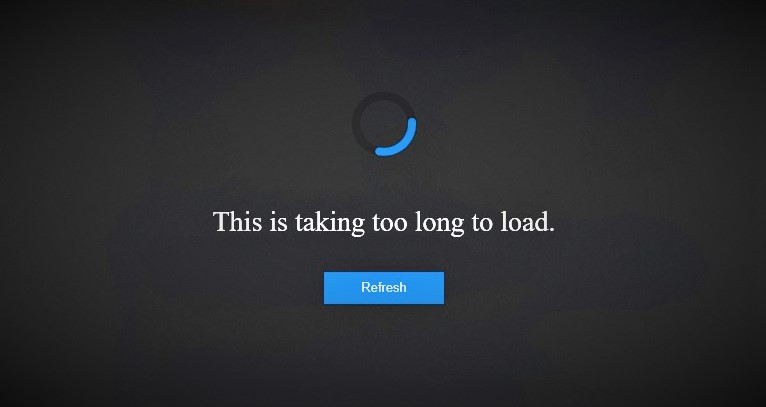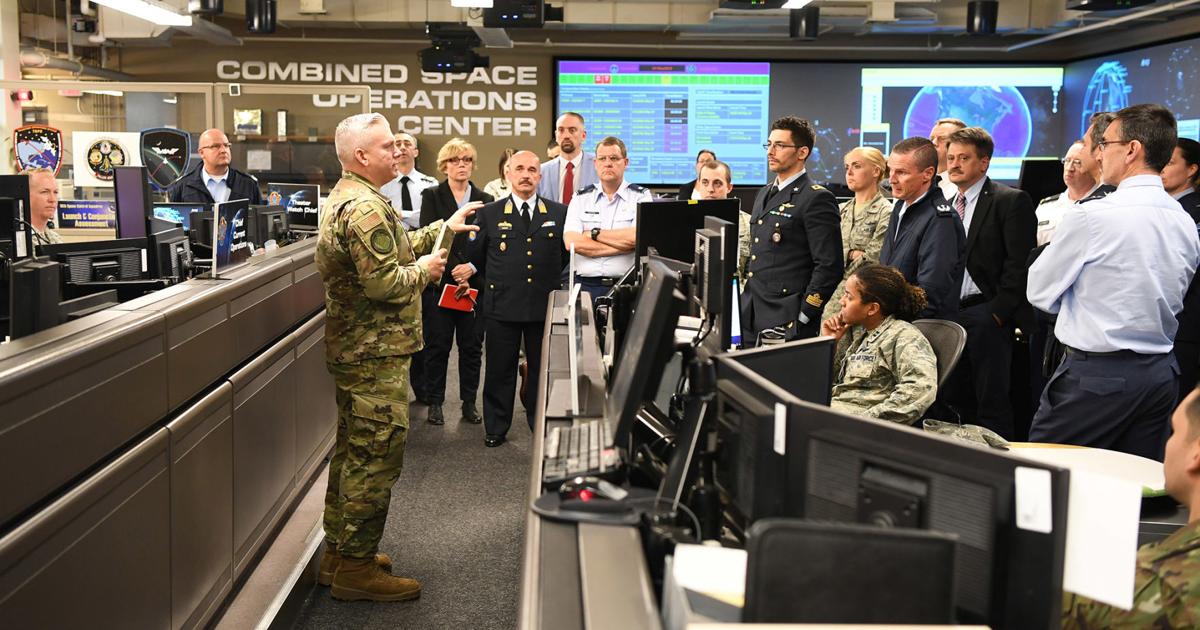When Colonel Jennifer Krolikowski-Stamer (known by those who work with her as “Colonel K”) took over a Department of Defense “software factory” some years back it had spent $800 million to come up with just one single application that had taken nearly a decade to get deployed – and its users largely loathed the thing.
Within three years of taking charge of the newly nicknamed “Kobayashi Maru” coding hub, her team, operating on a much tighter budget, had shipped 13 operationally accepted applications – including one built in six months for less than $1 million, which is now running in space command centres in the US, UK and Canada.
This sudden surge in effective productivity came as a shock to the system to some.
“They [DOD] actually told us to slow down a little bit at one point” she laughs. (They were struggling to keep pace with training users and integrating the applications) “It's quite a feat if they tell acquisition to slow down…”
It’s a rare public example of digital agility under the Department of Defense (DOD).
The frustration of working under the Pentagon’s colossal bureaucracy has led to no shortage of senior IT staff sharing their views blisteringly frankly before exiting stage left. Witness, for example, US Air Force Chief Software Officer Nicholas Chaillan describing in a September 2021 open letter the “continuous and exhausting fights” for funding, inadequate staffing (“IT is a highly skilled and trained job; staff it as such”) and “silos created purposefully to allow senior officials to satisfy their thirst for power”, or Preston Dunlap, Chief Architect Officer of the US Air and Space Force, this week recalling arriving on Day 1 to “no budget, no authority, no alignment of vision, no people, no computers, no networks, a leaky ceiling, even a broken curtain”.
See also: The Big Interview with US Army CIO Raj Iyer
How did she work this fast-paced turnaround of a failing programme? By unshackling her team, adopting Agile and a DevSecOps approach, bringing in a range of “non-traditionals” including external domain experts and engaging widely with private sector partners. (More detail below). But also, as she puts it, stepping back a little, rethinking how applications were approached: “Most people, when they think of the software stack, think of the hosting environment, the platform and the application. We actually really focused on data.
“Because all of this is about how you automate data; how you visualise it; how you [use it to help make] decisions. Part of it was about putting that data layer; that data architecture in there. My dev teams didn't have to be data experts per se. They just knew that they could pull the data in from the sources that we built for them and then they could run even faster; so it was also a case of bringing in tech to help accelerate us.”
(Pressed for examples she mentions a partnership with Palantir which has a data platform "that can abstract much of that work on behalf of the development teams. So instead of each individual app developer having to integrate 10+ number of data sources, they can do it once into the data layer who can then flow all that data to them. This can save hours of manpower that would have to do that manual integration work, thus accelerating how software is deployed. They also keep the data authoritative as it moves around the ecosystem. Again, instead each of the app developers having to cleanse, curate, work ontology, etc, this is all done in the data layer. That work is kept consistent among all teams and records the lineage of how that data is manipulated.")
Sitting down with The Stack, Colonel K – recently appointed as Chief Information Officer (CIO) at US Space Systems Command – doesn’t come across as typical brass, barking diktats, and for someone with 26 years in the military under her belt, seems to have sustained a healthy penchant for thinking outside of the box.
That’s no doubt partly what has helped her earn a reputation as a changemaker in a world not always overly eager to change; something that got her pulled into the CIO role – and pulled in early.
“The job was announced in December 2021 and normally rotation is seven months” she says, “but General Guetlein, who's the commander of Space Systems Command, thought that IT, all of the needs and the pain points that we have surrounding our IT and our technology was one of his top priorities in SSC, and so pulled me up early in order to be able to tackle that and start delivering on [addressing] those pain points.”

Tackling the “blue swirlies of death”
What are those pain points? One of the first is fixing the IT user experience, she says.
"[We need to fix this] so that people can work more effectively and be happy about doing that, because IT isn’t interfering with them all of the time and they’re not getting the little ‘blue swirlies of death’ for 10 minutes – which can be very exhausting when you are trying to get things done at work!"
"We also doing a pilot with the Air Force programme office, that does enterprise IT-as-a-service which reduces the amount of bloatware on laptops; still keeps them secure still keeps them viable for the networks like, it's all been proven out. But you know if we can remove the same three instances of McAfee scanning everything, well... And I've already been getting some positive feedback on that
"That’s one of my first missions, helping with the user experience and [asking] how do we bring in collaboration tools that [allow us to] work better amongst ourselves in government and with our industry partners; be more effective, do data-driven decision making and all of that jazz.”
A second priority is discovery and reforming acquisition. As she puts it: “The way that we traditionally work with a programme manager is that they're responsible for their box of stuff. They will go ‘I need the cloud’ so they buy some cloud, or ‘I need to have a network’ and they'll buy a network. So sometimes we get a little bifurcated. I'm trying to make that spend be more cohesive, so that we can actually have better buying power, be more effective and advance everybody, so that the folks building satellites or getting rocket services can focus on the mission and don’t have to worry about the IT piece -- because we have got that covered for you.”
Defense code factories and rethinking delivery
Rocket services, satellites… what *is* Space Systems Command, again? SCC is the Space Force field command responsible for “delivering “sustainable joint space warfighting capabilities… while disrupting adversaries in the contested space domain”. It provides real-time global access to SATCOM capabilities for joint operations warfighters and broadly, its mission areas include launch acquisition and operations; space domain awareness; positioning, navigation, and timing; missile warning; satellite communication; and more.
The application Colonel K's team proudly helped deliver at pace is “Space Board”.
The original $800 million application had in the region of 50 users; the upgraded version her team delivered in six months has over 1,000, including coalition members. It is, she says, “on their big board at CSpOC – the combined Space Operations Centre. It shows all kinds of information that they need for domain awareness, what launches are happening, significant events… Oh, my gosh, they keep adding features!”
To what extent do custom-coded Pentagon applications built out of defense “code factories” continue to have a future and going back to that Kobayashi Maru, or Space C2 turnaround, what was the magic ingredient to its transformation? “It comes down to the culture” she responds. “In my opinion, the tech part is actually really easy. The people problem is the biggest thing. So I would tell my team you can run with your safety scissors; you have the empowerment to do your work with the users, you guys know what you're doing...
“I gave them that trust and ability to be innovative and expand and just go. My team would get so excited when they could deliver something, we actually had a big board up in our office space that had all of the operationally accepted applications as they were delivered. They would find ways themselves to ask ‘how can we deliver faster? How can we be more secure? How can we get that code quality up there or address those people's pain points?’ So really, it was just enabling the team more than anything.
“Then bringing industry in as partners – not in a standoffish way, but to actually help augment us and accelerate us,” she says, adding: “I love working with non-traditionals”. (With what?) “Sorry: Folks who aren't the traditional defence primes, or who don't normally work with the DOD. Maybe more like Silicon Valley, or folks whose focus has always been commercial, and they want to break into the federal sectors.

“So they always have a different kind of a mindset and a different culture on solving problems.”
“We often get [from our users] ‘Hey! I like this widget!’ (laughs) and it’s a case of ‘well what are you trying to do with it? That widget may be great but it may not be what you are really looking for…”
When it comes to custom applications, they do have a space, she suggests; after all some unique security requirements render off-the-shelf software problematic sometimes, but that's not to say that the private sector can't be an increasing part of delivering services; they just need to be mindful of an increased focus on supply chain risk.
("I can't introduce risk to the ecosystem unless I know that there is a good amount of diligence there. It goes back into those partnerships with those companies: if they're really serious about working with the DOD, it's like, 'okay, guys realise we have our business case and security is a very important piece of that, I, we need to make sure that you can pass; if it's code, you know, you can go through the pipelines and make sure the security scans give you the thumbs up, or have you gone through what the FedRAMP processes and you've got an IL4 or IL5...")
The decorated leader, who holds three masters degrees (Aeronautical Engineering; Military Operational Art & Science; Strategic Studies) has been awarded over 15 major honors and was promoted to Colonel in 2017. What landed her in technology? “I’m just a geek at heart” she says. “I knew from about the age of six that I loved science and technology and ended up evolving into engineering. I actually also really love acquisition; being a good stewards of resources, bringing people on board and if it is an evolved engineering problem then the technology piece. That’s similar with the CIO role… there’s a big people piece to it!”
Her enthusiasm for the agility of private sector shines through in the call. Has she worked much outside the DOD herself? She’s completely frank in a way that might concern those worried about talent retention.
“Other than in college when I had internships but no, I've been in government service for about 26 years. But I'm looking forward to that chapter. I’m getting to the point where I need to retire semi-soon.
“So I’m looking forward to being out there in industry, too…”
So this CIO role may be her last government gig? “Probably… well, I’ll see how it goes!”
This story first appeared in The Stack on 2022/04/21 and was republished over the Christmas period.









